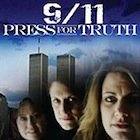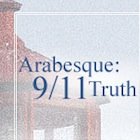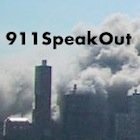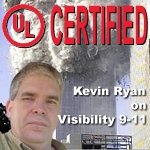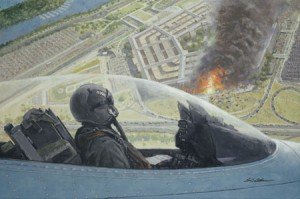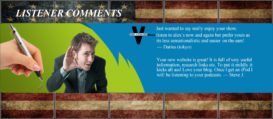New revelations in attack on American spy ship
Veterans, documents suggest U.S., Israel didn’t tell full story of deadly ’67 incident
By John Crewdson |Tribune senior correspondent
October 2, 2007
Bryce Lockwood, Marine staff sergeant, Russian-language expert, recipient of the Silver Star for heroism, ordained Baptist minister, is shouting into the phone.
“I’m angry! I’m seething with anger! Forty years, and I’m seething with anger!”
Lockwood was aboard the USS Liberty, a super-secret spy ship on station in the eastern Mediterranean, when four Israeli fighter jets flew out of the afternoon sun to strafe and bomb the virtually defenseless vessel on June 8, 1967, the fourth day of what would become known as the Six-Day War.
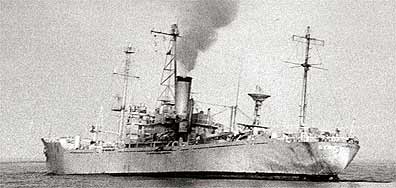 For Lockwood and many other survivors, the anger is mixed with incredulity: that Israel would attack an important ally, then attribute the attack to a case of mistaken identity by Israeli pilots who had confused the U.S. Navy’s most distinctive ship with an Egyptian horse-cavalry transport that was half its size and had a dissimilar profile. And they’re also incredulous that, for years, their own government would reject their calls for a thorough investigation.
For Lockwood and many other survivors, the anger is mixed with incredulity: that Israel would attack an important ally, then attribute the attack to a case of mistaken identity by Israeli pilots who had confused the U.S. Navy’s most distinctive ship with an Egyptian horse-cavalry transport that was half its size and had a dissimilar profile. And they’re also incredulous that, for years, their own government would reject their calls for a thorough investigation.
“They tried to lie their way out of it!” Lockwood shouts. “I don’t believe that for a minute! You just don’t shoot at a ship at sea without identifying it, making sure of your target!”
Four decades later, many of the more than two dozen Liberty survivors located and interviewed by the Tribune cannot talk about the attack without shouting or weeping.
Their anger has been stoked by the declassification of government documents and the recollections of former military personnel, including some quoted in this article for the first time, which strengthen doubts about the U.S. National Security Agency’s position that it never intercepted the communications of the attacking Israeli pilots — communications, according to those who remember seeing them, that showed the Israelis knew they were attacking an American naval vessel.
The documents also suggest that the U.S. government, anxious to spare Israel’s reputation and preserve its alliance with the U.S., closed the case with what even some of its participants now say was a hasty and seriously flawed investigation.
In declassifying the most recent and largest batch of materials last June 8, the 40th anniversary of the attack, the NSA, this country’s chief U.S. electronic-intelligence-gatherer and code-breaker, acknowledged that the attack had “become the center of considerable controversy and debate.” It was not the agency’s intention, it said, “to prove or disprove any one set of conclusions, many of which can be drawn from a thorough review of this material,” available at http://www.nsa.gov/liberty .
An Israeli Foreign Ministry spokesman, Mark Regev, called the attack on the Liberty “a tragic and terrible accident, a case of mistaken identity, for which Israel has officially apologized.” Israel also paid reparations of $6.7 million to the injured survivors and the families of those killed in the attack, and another $6 million for the loss of the Liberty itself.
But for those who lost their sons and husbands, neither the Israelis’ apology nor the passing of time has lessened their grief.
One is Pat Blue, who still remembers having her lunch in Washington’s Farragut Square park on “a beautiful June afternoon” when she was a 22-year-old secretary for a law firm.
Blue heard somebody’s portable radio saying a U.S. Navy ship had been torpedoed in the eastern Mediterranean. A few weeks before, Blue’s husband of two years, an Arab-language expert with the NSA, had been hurriedly dispatched overseas.
As she listened to the news report, “it just all came together.” Soon afterward, the NSA confirmed that Allen Blue was among the missing.
“I never felt young again,” she said.
Aircraft on the horizon
Beginning before dawn on June 8, Israeli aircraft regularly appeared on the horizon and circled the Liberty.
The Israeli Air Force had gained control of the skies on the first day of the war by destroying the Egyptian air force on the ground. America was Israel’s ally, and the Israelis knew the Americans were there. The ship’s mission was to monitor the communications of Israel’s Arab enemies and their Soviet advisers, but not Israeli communications. The Liberty felt safe.
Then the jets started shooting at the officers and enlisted men stretched out on the deck for a lunch-hour sun bath. Theodore Arfsten, a quartermaster, remembered watching a Jewish officer cry when he saw the blue Star of David on the planes’ fuselages. At first, crew members below decks had no idea whose planes were shooting at their ship.
Thirty-four died that day, including Blue, the only civilian casualty. An additional 171 were wounded in the air and sea assault by Israel, which was about to celebrate an overwhelming victory over the combined armies of Egypt, Syria, Jordan, and several other Arab states.
Read the rest of this article here.















